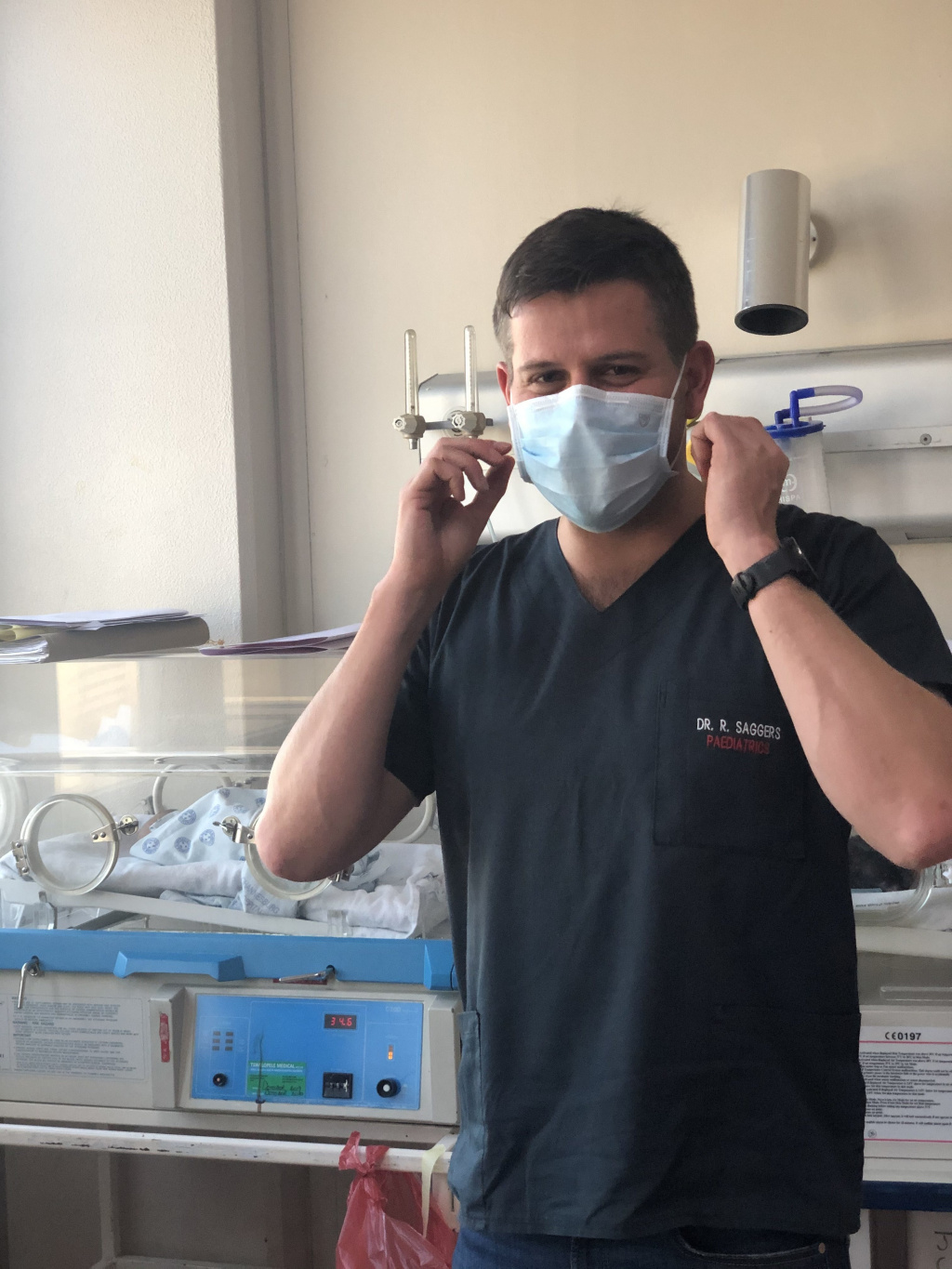Charlotte Maxeke Johannesburg Academic Hospital was among the first of South Africa’s public hospitals to prepare itself to admit pregnant women with Covid-19, rewriting the neonatal rulebook in the process. Vita talked to Dr Robin Saggers (OJ Alston 2003), Paediatrician and Neonatology Fellow at Charlotte Maxeke.
Q: What was the objective of the Covid-19 preparedness exercise?
A: South Africa is a low-to-middle income country, and the lack of resources available means we cannot increase our capacity, staffing numbers or available equipment. Yet, we must be as prepared, adaptable and efficient as possible to maximise the resources and equipment we have available to us.
Simply put, we realised that we needed to apply some creative thinking while also adopting a rational approach to suspected cases and infection control to provide the best possible care to our patients. Our protocols needed to be in line with local and international guidelines and include ongoing education to diminish anxiety among our healthcare professionals.
Q: What were some of the changes made at the neonatal unit?
A: We began by implementing all standard precautions to prepare a facility and its personnel to safely care for Covid-19 patients as outlined by the World Health Organisation. In addition, we created a set of standard operating procedures specific to Covid-19, and increased communication between our neonatal and obstetric teams.
To limit staff exposure, we had to change the way we were used to functioning. For example, before Covid-19, we used a ‘bottom-up’ approach, where an intern would be the first to attend to deliveries and call for a registrar or consultant’s help if required. Now we take the opposite approach – essential staff are in the delivery room or theatre, the more experienced staff attend first, limiting the number of staff exposed.
Staff training on the additional personal protective equipment (PPE) procedures was also a critical intervention. We also reallocated a triage area in the high care ward to an isolation area for sick newborns of suspected or confirmed maternal Covid-19 cases.
Q: What innovations did your team at Charlotte Maxeke implement?
A: Our team created disposable resuscitation boxes to attend deliveries. These boxes replace trolleys and contain PPE and a full array of equipment in a sealed box. As different places in the hospital have been repurposed for different functions, the boxes allow for a quick response to different parts where mothers with Covid-19 are admitted. Once opened, the equipment remains with the patient if they are admitted, preventing cross-contamination. The box itself is disposable (so that it doesn’t need to be removed from the room) while the equipment goes on to be sterilised.
Q: With Covid-19 pushing so many functions online, have you seen any technology benefits from the initiatives you’ve adopted at the unit?
A: We initiated an online resources portal for neonatal staff. This was created to overcome the ‘infodemic’ which has rapidly appeared. Everyone is overwhelmed with information, mainly through their cell phones, making it difficult to find important documents or reliable guidelines when needed. The resources portal has been useful in collating these important documents and links.
Interestingly, our weekly ‘Grand Ward Round’ - where we get insights from the experienced professors on challenging ICU and neonatal cases - has been converted to a virtual platform. Further, departmental meetings, tutorials and student teaching are now all online. Staff screening forms are processed through a mobile app, limiting paper usage and the possibility of contamination.
Hopefully, this need for improved telecommunications and technology will see the hospital improving its systems in the future, to ultimately involve an electronic health record for each patient.
Q: What are the key lessons learned from your experiences at the unit so far during this pandemic?
A: It is clear that human resources are the most important part of any organisation. Keeping a healthy, happy workforce is imperative in maintaining the optimal running of the hospital. This includes mental health and addressing the concerns of anxious staff. The next thing is that no ‘cog’ is too small – everyone plays their part, from doctors and nurses to cleaners, porters and ward clerks. Something as simple as removing waste or doing laundry has wide knock-on effects.
As colleagues and friends fall ill it makes one acutely aware to not take life for granted, as well as the basic measures to prevent infection: hand-washing, sanitising and physical distancing.
Q: Was preparedness ahead of the Covid-19 peak effective?
A: Despite preparations as outlined above, Covid-19 still overwhelmed the system causing us to rethink on a daily basis. The pregnant population is at risk, just like any adult, and we have seen high numbers of infected mothers. This led to overcapacity of existing structures within our neonatal wards, leading to us having to rethink the distribution of patients and improve our use of the layout. It involved creative thinking and additional skills I never thought I’d need during my medical career. The good news is we’re used to working in an overstretched system, and adaptability is engrained from the outset.
This article first appeared in the November 2020 edition VITA, the St John's College magazine that celebrates the richness, strength and deep heritage of our community.

